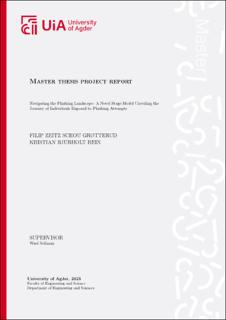| dc.description.abstract | The focus of this master thesis is to understand the process and stages individuals go through when exposed to a phishing attack. To achieve this objective, we will closely examine the responses of individuals throughout the phishing process and establish connections between their cognitive processes and actions, drawing upon relevant literature. By integrating these insights, we will construct a holistic phishing stage model. Consequently, our research question, "How can we identify and understand the stages involved in the phishing process?" will guide our investigation.
For this thesis, we conducted a qualitative study where we interviewed nine individuals from
seven different IT consultant firms in Norway.
We utilized the theoretical framework to create a holistic phishing stage model. The findings lead to the creation of a phishing stage model consisting of a pre-stage and three main stages with constituent activities that explain the flow from stage to stage. The findings reveal that individuals rely on technical solutions in more ways than we initially thought. Warnings in the delivery stage of emails affects the potential victim in the later stages, especially when they explore the content of a phishing message. Ignoring phishing attempts were found to be prevalent in the younger interview candidates.
Interestingly those who reported phishing attempts were found to do so in two different ways, either officially or unofficially. The unofficial reporting consisted of altering coworkers through word of mouth or other communication channels. In contrast, official reporting was the way intended by company policies.
This study offers a valuable model that effectively explains the stages individuals go through during the phishing process. This research enhances our understanding of said phenomenon by shedding light on phishing attacks from the victim’s standpoint. The insight gained from this thesis advances our understanding and offers valuable guidance for developing preventive measures, educational initiatives, training programs, and robust cybersecurity strategies. Furthermore, the model presented in this study serves as a valuable tool for identifying focal points in training efforts, thus enabling organizations to address vulnerabilities and effectively enhance their defenses against phishing attacks. | |
